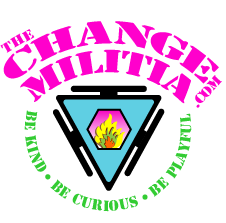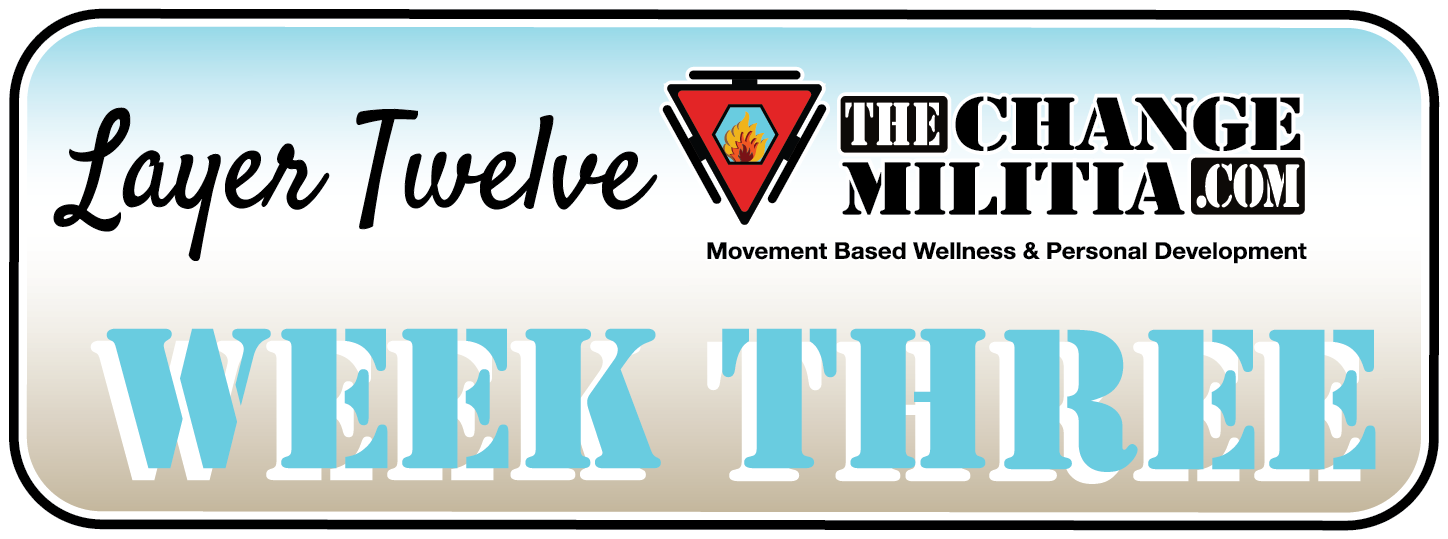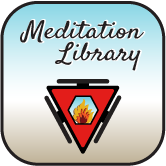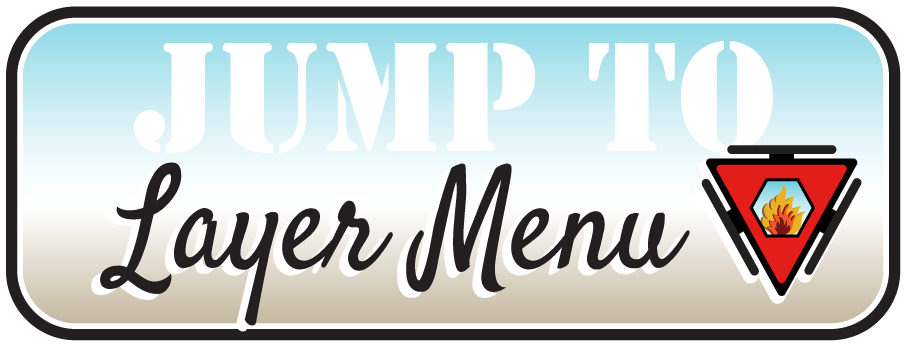Layer Twelve, Week Three – Sunday
- Read and review summaries of Layer Four, Weeks One and Two
- Do one or more of these movements Folding Compensation, Hanging in Neutral, Hula Breath, and Eyes Closed Balance.
Sunday Focus
Layer Four, Week One – Focus: Take any one of your compensations and see if you can identify some of the ingredients. Most of the reasons you compensate aren’t factual, they are fear based. Begin to be aware of how you limit your interactions, intimacy, and connections. Ask yourself what you are afraid of, and then try something outside of your current normal.
Layer Four, Week Two – Focus: Assess your general feeling of balance. Ask yourself if you feel centered in your bodies, stress-free, and vital. Do you feel strong, flexible, and resilient? Do you have rhythm? How clear, focused, and creative do each of your bodies feel? Do any of them feel stressed or overwhelmed? Does the world around feel like a friend or a million enemies? What is your general relationship with others? How defended, aggressive, or reactive do you feel?
Sunday’s Concepts
Time for the next few layers in your year-end review. If any of this doesn’t feel second nature to you, follow the links and review the concepts and accompanying movements. Take your time and hang out in the discomfort until your system adapts to the concepts and integrates the movements. You should continue to feel the intention and results of each movement. If not, do each until you do.
Your goal as you make your way through the review is to question your metabolization and digestion. Can you feel the ideas and movements in your body? Are you able to read without feeling confused, resistant, or oppositional?
If not, gift yourself some extra time, go back and feel deeper and fuller understandings. Build onto your strong foundation.
Layer Four, Week One Concepts suggested that the first key to staying in balanced expansion is to learn the inner workings of the balancing parts.
Fear is the primary compensation vehicle (distraction) your subconscious mind uses to compel you to limit, distance, or quit. Fear uses compensation to hide you from your actual potential. It tries to keep you firmly rooted in your familiar or habitual potential. Distancing is probably your second most frequent compensation.You reduce your chances of success, fulfillment, and happiness when you create, maintain, instigate, or allow distance from your relationship to others, yourself, or your environment.
Every compensation not only drains your energy but it unbalances it. When you think, your energy goes to your head. When you get emotional, the energy goes to the body area associated with that emotion. As you add value and complexity to your emotions and thoughts, they increasingly unbalance you.
When distracted, you compensate in some way. Compensations are the reactive movements you make when you allow distraction. They take you out of balance, cost you energy, and limit your potential. As you can find your compensations, identify your distractions, and then stop doing them, you will find yourself with a lot more energy, much less stress, and everything in your life will feel easier.
Layer Four, Week Two – Concepts: Balance begets fluidity, vitality, and effortlessness. When balanced, everything is easier, more fluid, and more fun.
Balance has an infinite number of interconnecting layers, levels, or tiers. The first level of balance is between your bodies. To achieve balance, generate an equal amount of energy in each of your bodies: physical, mental, emotional, energetic, and environmental.
The next level of balance consists of seven components: Focus, Speed, Endurance, Strength, Flexibility, Stability, and Rejuvenation. Each of these seven components will have a balance point and each will influence each of the bodies and each other. They interpenetrate each other like scents combining to make other scents. The resulting scent has aspects of both but also a smell of its own.
The first of the seven components is Focus. Focus achieves balance by equally combining agility, accuracy, and clarity. Agility is your ability to be alert, active, quick, and nimble. (A kid playing an interactive video game.) Accuracy is precision, coordination, structure, and intentionality. (An Olympic ice skater.) Clarity is made up of equal parts transparency, comprehension, context, and relevance. (A math genius.)
Maintaining your balance regardless of the changes in your physical, mental, emotional, or energetic orientation requires focus. When your energy is focused, it is efficient. It flows seamlessly to where it is needed, finds every opportunity to absorb new energy, and doesn’t waste itself on needlessly defending, protecting, distancing, or isolating.
Layer Twelve, Week Three – Monday
- Read and review Monday Concepts
- Do one or both movements: Filling the Balloon, Leg Swing, Third Eye Breathing, and Squat Balance.
Monday’s Focus
Layer Four, Week Three – Focus: Track how present you feel. Can you exist in every moment without fidgeting, getting impatient, or interrupting? How easy is it for you to relax regardless of what is going on around you? Where are you tense? Where does your body hold stress? What does it feel like to feel focused and how does that transition to unfocused?
Layer Four, Week Four – Focus: What is your general energy level? When do you feel the most alive? Think of the energy that moves when you are furious, terrified, jealous, or manic. The feelings of energy movement that are attached to non-beneficial states will have a different quality. They will feel frenetic. See if you can begin to discern the difference.
Monday’s Concepts
Layer Four, Week Three – Concepts: The second component of balance is Stability. When you think of stability you might think of something constant, fixed, or unchangeable. The stability we will talk about is being centered, present, and accepting. Stability connects and unifies. Accepting and allowing what is without expectation, demand, or judgment.
Patience is a function of stability. When you aren’t expecting or demanding change, patience happens.
Stability is easiest to identify when it is not present. It is easy to feel when you or someone else is mentally or emotionally unstable. Their energy is frenetic, unpredictable, and usually volatile. Stability is cohesive; when you are stable, you can hold it together, not come unglued.
Third on the list of components is Speed. The primary ingredients in speed are momentum, technique, and purpose. The speed of your mental body must match or exceed the speed of your physical body. To move efficiently you must decide which action is most beneficial and your mental body monitors your technique and its accompanying efficiency. Your conscious mind helps to maintain speed by limiting distractions (obstacles and drag) and helping to keep your frame of reference (intentions and trajectory).
Your emotional body finds balance in speed by allowing momentum (not stopping you when things start to get emotionally intense). Emotional speed happens when you don’t put on your emotional brakes. Energetic speed is all about your rate of vibration. Passion, creativity, happiness, and curiosity have a very high vibrational rate. Confusion, insecurity, and boredom have low vibrational rates.
Environmental speed is how quickly you can metabolize the energy of your environment. Some of your relationships feel much more effortless than others. Some relationships are efficient because you have let go of your resistance and there is residual momentum that keeps things moving.
Layer Four, Week Four Concepts: Fourth in the list of components is Strength. Strength is the maximum amount of energy you muster against opposing forces. It is how powerfully you can hold or maintain your desired configuration, trajectory, or intention without submission.
Strength requires leadership and collaboration (functionality and communication between structures and tissues). The stronger you are, the more you can do at one time without strain. It doesn’t matter how strong you are if you exert just as much energy in an opposing direction. Strength works to overwhelm resistance, but the less resistance you have the more available and usable your strength is.
Physical strength converts very easily to mental and emotional strength. When your body is strong, your mind can pull some of that capacity when needed. When your body is strong, your subconscious mind has less to fear and uses less energy looking for possible threats.
Mental strength is the degree to which you can take conscious action without distraction, diffusion, or dysfunction. Emotional strength is how fully you can express your magnificence and display the power of your passions without bullying, coercion, manipulation, or seduction. Subtle body (energetic) strength is your total capacity and how available it is for use. Environmental strength is your ability to influence or resist forces (people, things, temptations, distractions) gathering around you. How strongly are you determined to succeed, be kind, make a change, or be happier?
Layer Twelve, Week Three – Tuesday
- Read Tuesday Concepts
- Do one or more movement – Third Eye Horse, Rocking Horse, Panting Horse Breath, and Energy Distribution.
Tuesday’s Focus
Layer Five, Week One – Focus: Which of your relationships feel like they tax, distract, extinguish, or overwhelm? Which ones amplify, excite, elevate, and inspire? Focus on what your taxing relationships feel like in your body, what labels you attach to them, what emotions are stirred, and how you create limits.
Layer Five, Week Two – Focus: With every action and interaction, see if you can identify the pieces coming together to ensure continued movement (endurance). How long can you remain in an uncomfortably intimate space? How long can you remain ecstatic, overtly happy, or filled with anticipation? How many minutes can you stay focused before you allow yourself to get distracted? How long can you maintain an intention before you start to question it.
Tuesday’s Concepts
Layer Five, Week One Concepts continued with number five, Flexibility. Flexibility is non-opposition, range, elasticity, and non-attachment.
Physical flexibility is more than your range of motion and your elasticity. It is your tolerance for discomfort and your ability to tolerate expansion. Healthy physical flexibility is the ability to sense when you are nearing the boundaries of your range of motion and not bullying yourself into injury or limiting yourself because of fear or habit.
Mental flexibility is your ability to question and devalue your predispositions, beliefs, and biases. It is being able to feel the pull of distractions without getting distracted.
Emotional flexibility is the skill required to emotionally multi-task. Can you allow yourself to feel multiple emotional states without preference? Can you be happy and frustrated or sad and elated? Can you feel devastating grief and still be incredibly grateful? Sobbing laughter is a great example of emotional flexibility.
Subtle body flexibility is also how easy it is for you to share a space with someone who is in a completely different energy configuration. People who work in the mental health field have a great deal of energetic flexibility. How little can non-beneficial input from your subconscious mind influence you?
Environmental flexibility is the degree to which you exist in a non-judgmental state without labeling or limiting. Can you float through the world unaffected by the drama, projection, expectation, and demand around you?
Layer Five, Week Two – Concepts brought the sixth of the seven balance components, Endurance. Everything you do for more than an instant requires some sort of endurance, from running to sleeping. Every action, movement, conversation, bodily process, and thought need an on-going energy supply to continue to exist.
Being kind, happy, angry, sad, jealous, fulfilled, loving, and present all require endurance. Endurance requires an ability to tolerate discomfort because there is a fear component in every action without a known outcome. You are overruling your subconscious mind’s desire to maintain stasis. To persist, you must tolerate the discomfort that accompanies every fear without stopping.
Physical endurance requires some level of efficiency, both metabolic and functional. Physical endurance requires maintaining efficiency below the aerobic threshold. Aerobic movement is when your system can replenish the energy it is exerting at nearly the same level that it is burning it.
Mental endurance is how easy it is for you to remain focused. Maintaining focus, mental clarity, and conscious decision-making require endurance. The heart of mental endurance is self-confidence and self-assuredness.
Emotional Endurance is your ability to fluidly metabolize the energy in your environment without getting overwhelmed (becoming emotionally anaerobic). Your emotional body is inherently fluid. Your subconscious mind tries to use that fluidity to instantaneously unbalance you or keep you unbalanced.
The most unrecognized aspect of endurance is collaboration. In every moment, instance and interaction, things must work together to continue. Beyond coordinated movement, muscles used in running must be continually restocked with fuel. Conversations require that words work together, thoughts connect, and that both parties continue to participate. Lasting relationships happen when both sides choose to maintain a presence.
Increasing your endurance is a matter of finding which system or body is lacking and then exerting some time, energy, and love to raise the bar. The higher your endurance level, the easier it is going to be to stay balanced.
Layer Twelve, Week Three – Wednesday
- Read Wednesday Concepts
- Do one or more movement – Seated Horse, Emotional Balance, Recruit and Entrain, and Energy Distribution – One Less Step.
Wednesday’s Focus
Layer Five, Week One – Focus: Go through your relationships and begin to unravel how and why you make things hard and when you allow them to be fluid. Focus on what your taxing relationships feel like in your body, what labels you attach to them, what emotions are stirred, and how you create limits. Can you feel your desire to create distance when it arises?
Layer Five, Week Two – Focus: With every action and interaction, see if you can identify the pieces coming together to ensure continued movement (endurance). Do you run out of steam before the day is done? Where can you improve? How long can you remain in an uncomfortably intimate space? How long can you remain ecstatic, overtly happy, or filled with anticipation?
Wednesday’s Concepts
Layer Five, Week Three – Concepts highlighted the last of the components, Rejuvenation, and its most under-recognized aspect, opportunity. You revive your energy to the degree your systems can recognize opportunities. To be able to look for opportunities, your bodies must feel safe or be relaxed enough to not be defensive. You also must have some home for the replacement energy; you need storage capacity.
Energy is released only when an object changes, when its old way of being ceases to exist. You eat an apple and the apple no longer exists as an apple. You and the apple combine to form something new. You are different after you eat an apple. Eating an apple changes you.
This is easy to understand when it comes to food but the same mechanisms exist when we convert conversation to emotion, emotion to expression, touch to energy, thought to action, love to affection, etc. You express a feeling and it transforms. As soon as you have a thought, it dissolves or combines into other thoughts.
Emotional rejuvenation involves the acceptance and welcoming of the sensations you are feeling. Emotions don’t exist until you label them. Depending on the label, you will either increase or decrease your ability to rejuvenate.
Emotional labels like confused, exhausted, distrustful, numb, insecure, and disgusted will all decrease your ability to rejuvenate. They are limiting, stagnating, or compressive.
Emotional labels like curious, passionate, joyful, content, enthusiastic, confident, loving, trusting, proud, and secure will increase your capacity for rejuvenation.
Your environment and the people in it can contribute to your rejuvenation to the degree you accept it and them as safe and beneficial. The efficiency in which you welcome and receive the world around you determines your capability and capacity to rejuvenate.
That’s it. The explanation of the 7 components of balance is complete. As you gain and increase your ability to feel the qualities of each of the components in each of your bodies, it will be easier to discern your balances and imbalances. You will be able to feel the transition from balance to imbalance and identify the opportunities to take corrective (beneficial) actions.
Layer Five, Week Four – Concepts: Here is something that may seem strange and hard to accept: what you see as your greatest strength is almost certainly your biggest area of imbalance. Here is why: you fall into your strengths because they require the least amount of effort and because they are the most habitual things you do.
Equilibrium (centered balance) happens when you strengthen the weaker links of your chain. Begin by identifying your greatest strengths and then looking for ways to enhance your strengths in the other areas. When you balance your strengths, your stress levels will lower in every area of your life. When you are out of balance, your compensations increase. That imbalance increases the stress (tension and fear) throughout your system.
As you balance your strengths, the stress level of the people around you will decrease because they aren’t being triggered by your imbalance(s).
Balance strength will increase your situational awareness. It will be much easier for you to discern the actuality and opportunity of any given situation when you aren’t biased toward the imbalance of your greatest strength.
Your second most prominent imbalance is your blind spot; something you ignore, try to not notice or that you label as injured, broken, or insufficient. The relationship, feeling, habit, or appendage that you make excuses for or try to ignore. Each of your bodies and every component will have one or more blind spots.
Physically your blind spot is some nagging injury, cosmetic imperfection, unaddressed weakness, or neglected range of motion. Most nagging injuries persist because they are not given sufficient rehabilitation. The challenge with blind spots in general and nagging injuries specifically is that all the other parts of your life or body must compensate by working harder.
The benefit in identifying your blind spots is that you will begin to be aware of all the opportunities you have been missing. You will also see where you have predetermined (and limited) your future actions to avoid the blind spots.
Layer Twelve, Week Three – Thursday
- Read Thursday Concepts
- Do one or more movement – Hara Breathing, Center-Off Center, Center – Off Center (Mental), and Global Grounding
Thursday’s Focus
Layer Six, Week One – Focus gave you a way to suss out your current imbalances. Make a list of the seven components and beside each one list each of the 5 bodies. Go through and give each of the thirty-five options a number from 1-10 with one being the most unbalanced. Follow this model. Spend the day reviewing your list. Verify that you were being as forthright as possible and adjust it as necessary. Highlight the lowest numbers and reflect on your options to improve.
Layer Six, Week Two – Focus: Each greatest strength, greatest weakness, and blind spot has its own consciousness and energy configuration. Bring your awareness to each and feel for its qualities.
Thursday’s Concepts
Layer Six, Week One – Concepts: Your third biggest area of imbalance is probably what you see as your greatest weakness but probably not for the reason you think. What you see as your greatest weakness is probably the thing that works the best to bleed off your excess energy. It is a very effective distraction.
You use your greatest weakness as a scapegoat. You spend a bunch of energy thinking about it, talking, emoting, comparing, judging, hating, remembering past incidents, and projecting future incidents of it.
Every judgment is a subconscious desire for distraction.
Reflect on the aspects of your personality that most frustrate, annoy, vex, irritate, embarrass, perplex, or make you the most uncomfortable. What do you spend the most time and energy pondering, ruminating, or obsessing about? Is it just a convenient way to create and maintain your distance from others, limit your intimacy and reduce the amount of connection you have? Do you use it to bleed off your excess energy?
Have you ever wondered why you don’t just deal with your greatest weakness? Your greatest weakness is manageable. The reason you chose it wasn’t because it was the most grievous but because you could worry about it without fear of overwhelm.
Why doesn’t your system default to balanced and fluid? Your subconscious mind is the primary culprit. Both fluid and balanced lead to growth, growth requires change, and your subconscious mind does not like change. So, it sabotages your balance and hinders your fluidity to keep you in a familiar place.
Simply put, your subconscious mind concerns itself with two things: threat assessment and homeostasis.
Homeostasis has a lot of beneficial attributes. It keeps your blood oxygenated to a healthy level, controls your heartbeat, respiration, and blood sugar, and replenishes energy to the cells. Your subconscious mind co-opts homeostasis to keep you thinking and emoting in a familiar and narrow range.
So, to achieve fluid balance, you will parent your subconscious mind with your conscious mind. You will direct and train, override and decide, and determine the path that leads to long-term growth, health, happiness, fulfillment, and success.
Layer Six, Week Two – Concepts: The reason you don’t dissolve into a blubbering, dysfunctional mess is because consciousness and collaboration exist at every level of each of the five bodies and all seven components. Cells function and act collectively without any required input from your mind.
Physical Body: At the cellular level, each cell has a primary intention, to survive and a secondary intention to work in conjunction with its neighbors. Every cell has a consciousness. The cell the tissue is a part of also has a consciousness, as does the next larger structure and the next, all the way up to the whole organism. Every organism is part of some larger organism.
And remember, we started at the cellular level, but the progression goes toward the smaller too. There are gazillions of parts and levels that make up a single cell and all of them collaborate to survive and thrive and to ensure the continued survival of the cell. And every component of a cell will have some level of consciousness.
Mental Body: When you give birth to a thought, that thought takes on a life of its own. If you feed it, it will continue to exist. If you don’t feed it, it will atrophy and die. When two thoughts come together, they give life to a new thought that individuates. The energy you give to your thoughts creates potential. Thoughts influence your internal and external environments. Thoughts are sparks of consciousness.
Emotional Body: As we have discussed before, emotions are the label you give to your energy configurations. You feel something, or really a bunch of somethings, and your subconscious mind assigns a label. As that label is attached to your sensations, the emotion(s) comes into existence. Before the label, that specific emotion in that specific time didn’t exist. You brought it to life by connecting those momentary energy configurations (sensations) under one name. When you assign a label, your body reconfigures itself to co-exist with the newly created consciousness (label).
The same thing happens in your relationships and environment. The energy, things, and people around you begin to reconfigure when you project your emotions into and onto the space around you. As you change, your environment changes. Your local environment influences your non-local environment.
So, you influence your immediate environment which influences the next biggest environment until what you do, how you feel, and the labeling of your energy has global emotional implications.
Environmental Body: When you emotionally collaborate with someone, it changes the nature of your relationship forever. And the new nature will have a life (consciousness) of its own. It will be different than everything else. It will be singular … until it changes by interaction with something else. Each time you collaborate with a person or group, you increase the potential of that relationship and the degree of consciousness of the collaboration.
Layer Twelve, Week Three – Friday
- Read Friday Concepts
- Do one or more movement – Slow Motion Joint Articulation, Squat, Edges of the Breath, and/or No Sweat, Sweat.
Friday’s Focus
Spend the day reflecting on the italicized words in Friday’s Concepts. Question your level of understanding. If you can’t feel each of them in each of your bodies, spend some time reviewing.
Friday’s Concepts
Let’s talk about the components.
Each of the components each has a consciousness too. When you are focused, Focused exists as a configuration, outside of, and a part of everything else. Combinations of bodies and components also combine to form individuated consciousness. Mental focus exists outside of and as a part of all other things.
When you are mentally focused on solving a problem, you are creating a relationship between the unresolved issue, the potential solution of the problem, your mental body, and the component of focus. Your other bodies and all the other components will also play a part and become part of that relationship. Your emotional body will create a fear/benefit potential, your physical body will help determine the action viability, and all the other components will add their flavor.
This amazing network of communication and collaboration that happens instantaneously between every cell, every thought, every emotion, and every interaction ensures some semblance of basic balance because everything shares the same foundational intention. We are drawn to collaborate because from the smallest and largest structure, the intention is to survive and thrive.
As a wrap-up, let’s review the underlying principals presented in the first half dozen layers.
Energy – The consciousness of change. The combustion of the past and the birth of the moment. The awakening of opportunity. Life. Nature. Transformation. Movement.
Resistance – The energy you spend trying to make right now into something that it is not. Fear of potential, possibility, and opportunity.
Subconscious Mind – The primal, undeveloped, part of your psyche whose primary goal is to keep you in a state of fear, doing what is familiar, and limiting your exposure to change and growth. The binary brain (black and white, yes and no, safe and unsafe, wanted and unwanted).
Discomfort – Discomfort is interesting because there are several varieties. Non-typical discomfort would be anything that disrupts your normal patterns. Typical discomfort would be the familiar things that are part of your normal patterns. Typical discomfort usually serves as a distraction and is rarely growth inducing. Stress, overwhelm, recurring pain (like tension headaches) are examples of typical discomfort. Compressive discomfort would be anything that limits your ability to move, think, feel, or experience. It is brought on as a reaction to intimacy or expansion. Expansive discomfort or healthy discomfort is almost always growth inducing. It happens when you explore your edges, the boundaries of your known universe.
Energy Configurations – The state of your being. Thoughts, feelings, emotions, beliefs, and every flavor of relationship will have a configuration. As energy changes (expands, contracts, stagnates, divides, or is exerted), the configuration changes. All configurations are in a constant state of transition. Your subconscious mind tries to forestall, limit, and inhibit those transitions.
Flow, Effortlessness, and Fluidity – Flow is energy moving, changing its configuration. Effortlessness is energy moving without resistance. Fluidity is the feeling of effortless flow. Your subconscious mind is deathly afraid of fluidity. It creates resistance as a way to curtail, limit, reduce, or stop the fluid transition from one energy configuration to another.
Communication – The co-mingling of energies. You communicate to increase or decrease the rate, degree, and amount of change. Most oral communication is used to verbalize resistance and to limit change. Transparent communication happens when you are clear (pun intended) about what you fear and what you are trying to limit. Most communication is not transparent, it seeks to hide the fear and obfuscate the demand to limit. Most communication reduces intimacy, expansion, and growth.
Sensation – The way change feels. Energy moving. The re-configuring of configurations. Birth and death. Transition, transformation, and conflagration. As you increase your ability to feel, your sensations will be felt as infinite movements of energy without label.
Habits, Compensations, and Beliefs – Failures of your conscious mind to override your subconscious mind. Short cycles of function/dysfunction, expansion/contraction, and movement/stagnation. If you didn’t have a subconscious mind, you wouldn’t have any habits, good or bad. You would exist in a constant state of opportunity maximization. Your subconscious mind loves habit, compensations, and beliefs because they always take you back to where you started, to someplace familiar and limiting. They create patterns your subconscious mind uses to distract you.
Personality – Your current collection of habits, compensations, and beliefs. Your typical and recurring energy configurations. Your personality is the outward display of your subconscious mind, its reactions, and its limiting behaviors. Without a subconscious mind, you wouldn’t have a personality, you would be in a constant state of flux, fluidly changing to optimize your experience.
Layer Twelve, Week Three – Saturday
- Read Saturday Concepts
- Do one or more movements from the preceding days that you haven’t already done.
Saturday’s Focus
Spend the day reflecting on the italicized words in Saturday’s Concepts. Question your level of understanding, if you can’t feel each of them in each of your bodies, spend some time reviewing.
Saturday’s Concepts
Distraction and Diffusion – You get distracted from your conscious movements, decisions, and intentions by your subconscious mind. Distractions diffuse vitality. Your subconscious mind is always looking for ways to diffuse, bleed off, any energy it feels is excessive in any of your bodies or components. All distractions diffuse and all diffusions are distractions.
Labels – Every label is manufactured by your subconscious mind as a way to limit opportunities and potential. Your labels give your systems something to conform to. You aren’t your labels until you create the label and then your subconscious mind uses the label as a template to change the configurations of your bodies and components.
Stress – A label your subconscious mind creates as a way to curtail expansion. Once created, stress, becomes a repository your subconscious mind uses to store energy it feels is in excess of typical levels. Stress doesn’t exist until your mind creates the label. Before the label, you are accumulating energy.
Projection – The tactic your subconscious mind uses to bring a future fear into the present moment as a way to limit and diffuse energy movement, expansion, and growth. Your subconscious mind uses projections to fit things into familiar boxes.
Trigger(s) – Anything that elicits a reaction, distraction, or diffusion. Your subconscious mind creates triggers as a way to make your mediocrity more efficient. Being triggered is a choice born of habit and subjugation to your subconscious mind.
Pre-Trigger State – The fullness before the distraction, diffusion, trigger, or reaction. Every single time before you are triggered, you are in a pre-trigger state. Growth happens when you tolerate the discomfort of the pre-trigger state until your systems (bodies and components) adapt.
Reaction – Unconscious action brought on by a trigger. Energy expenditure with a very low return on investment.
Compensation – Post-trigger energy configuration. After every reaction, you reconfigure yourself to match some familiar and habitual label, belief, or pattern. What you do after you allow yourself to be distracted.
Images and Beliefs – Your default preferences and judgments. Your imbalance pre-sets. Assumptive truths that serve to constrict current perceptions to familiar labels.
Demands – Subconscious mandates that the world conform to your fears. Energetic funnels that co-opt reason and opportunity into familiar patterns of mediocrity and habit. The walls of your limiting boxes.
Value – The fictional benefit your subconscious assigns. The static energy drain of your biases. The degree of comfort or projection something or someone will meet your demands or soothe your fears.
Attachment – The adhesive quality of your fears and the energy required to maintain the existence of those fears. Energy equal to the projected suffering of some future loss. How you mitigate the potential for change. You are attached to the degree you fear losing something.
Responsibility – The ability to decide and the capability to respond. The conscious decisions you make to identify, evaluate, and embrace opportunity.
Distraction – Your subconscious mind’s primary tool to derail your expansion and momentum. The internal, external, and relational reactions you use to lower productivity and efficiency.
Balance – The optimal energy configuration in every moment. A fluid state that is centered, focused, energized, intimate, and present. Equality between the bodies and the components.
Dysfunction – Movement from one imbalanced state to another imbalanced state. The expedient cycling of potential away from health and balance. Any non-beneficial energy configuration.
Distancing – Any action or reaction that results in less energy, intimacy, or collaboration. Mental, energetic, and emotional compensations that lower, inhibit, or prevent presence and connection.
And finally, a review of the components:
Focus – The ability to harness your energy in a specific direction(s) for an extended period of time.
Stability – Unwavering allowance without demand or expectation.
Speed – Efficient movement with minimal distractions in an intentional trajectory.
Strength – The accessible capacity (force) of your persistence. The energetic expression of passion.
Flexibility – Your ability to withstand discomfort without compensating.
Endurance – The ability to maintain healthy discomfort over the course of an action or event.
Rejuvenation – The ability to take in more energy than you are exerting.
Next week, we will continue our review with Layers 7-9. If this week felt overwhelming or anything less than a fluid revisiting of the familiar, I urge you to spend a bit more time reviewing. Feel, be sensorially intimate, with the concepts, focus, and movements, don’t just have a mental understanding.

















